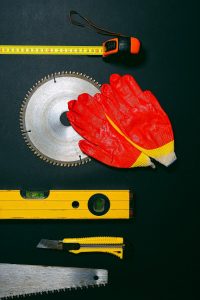Table of Contents
Introduction
Your circular saw blades are bound to lose their edge and become dull over time, even when you regularly carry out proper maintenance. The blades may chip, become covered in grime and grease, which will reduce the cutting efficiency.
It would help if you sharpened your circular saw regularly to ensure you get the best out of your saw. If you are wondering how to sharpen your circular saw blades by hand, here is a post to show you the step by step process involved.
Steps to Sharpen your Circular Saw Blade
There are different types of circular saw, which you can compare here circular saw. However, regardless of the kind of saw you use, these are the steps you need to take to sharpen your blades.
- Unplug the saw from the power source
Before you attempt to sharpen your blades, always ensure the saw in unplugged, and if you use a battery-powered saw, make sure to remove the batteries. Unplugging the saw will enable you to sharpen the blade carefully and reduces the risk of bodily harm and damage to property.
- Remove and secure the blade
You may need a wrench to remove the blade from the saw. However, some brands have a lock mechanism that makes removing the blade easy. After removing the blade, place it securely in a vice grip. Let the blade face you while the teeth are pointing towards you.
- Mark the blade
Make a visible pencil mark on one of the teeth; this will serve as a starting point. It will also help you know when you have gone around the blade.
- Inserting the file
Place a triangular file under the marked tooth and make sure it is perpendicular to the blade itself. Make sure to properly align the file and blade to get the best sharpening angle, which will provide the best results. Also, make sure the best sharpening is dependent on your comfort too.
- File the teeth
After inserting the file, you can begin to file the tooth. File the tooth about four times. Don’t apply too much pressure when filing the tooth as you can damage it. Apply light pressure. When you are done with a tooth, skip the following tooth and file the next one. The reason for avoiding those teeth is that they are tilted in the opposite direction. This filing process is done up to six times.
- Flip the blade
When you are done sharpening the teeth, remove the blade and flip it, then secure it in the vice again. Make a visible pencil mark on the blade, just as we did earlier. Repeat the process of inserting the file and filing the teeth. When the blade is flipped, you get to file the earlier skipped teeth.
One of the reasons blades get dull quickly is not using the right circular saw for cutting. Here’s a post on what size circular saw to get.
Here Are Some Tips When Sharpening Your Blade
- Do not apply too much pressure or over sharpen the blade
- Wear protective gear to protect your eyes and exposed skin
- Take note of the polished spots as they will guide you on the places to concentrate your filing efforts
Conclusion
It is necessary to sharpen your blades often to ensure you get the same quality of work you got from the saw when you purchased it. A sharp blade means you can get jobs done faster and ensure you are efficiently utilizing the saw motor. You will make clean cuts, so no shoddy quality. With a faster work rate and efficient use of the engine, you will save costs of cutting. When buying blades for your saw, don’t for cheap blades as it will be more expensive to replace them in the long run.
If your circular saw is blunt and you can’t sharpen immediately, but you have some urgent cutting to do, you may be able to use a jigsaw instead, depending on the type of material. Check which jigsaw blades to use‘
Here is how to use a jigsaw‘

